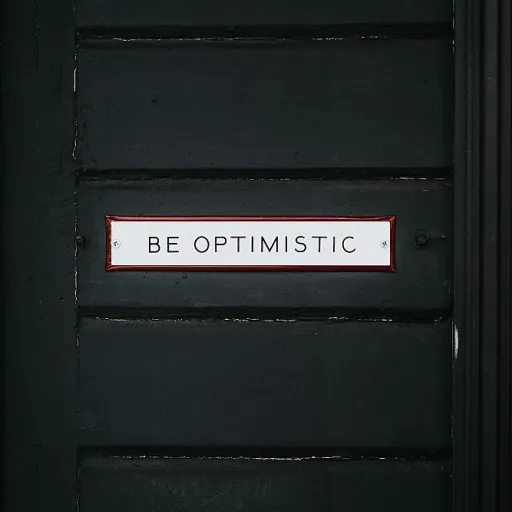
The Basics of Intermittent FMLA
Understanding Intermittent FMLA Leave
The Family and Medical Leave Act (FMLA) provides eligible employees with the right to take unpaid, job-protected leave for specific family and medical reasons. Among its provisions, intermittent FMLA leave allows employees to take leave in separate blocks of time due to a single qualifying reason, rather than one continuous period. This flexibility is crucial for employees dealing with serious health conditions or caring for a family member with such conditions.
Intermittent leave can be taken in hourly increments, which can be particularly beneficial for employees who need to attend regular medical appointments or manage chronic health issues. However, it requires careful coordination between the employee and employer to ensure that the leave is used appropriately and does not disrupt the workplace unnecessarily.
Employees must provide notice to their employer when they intend to take intermittent leave, and in some cases, medical certification may be required to validate the need for such leave. Employers are responsible for tracking the hours used and ensuring that the employee does not exceed their leave entitlement within a 12-month period.
Understanding the nuances of intermittent FMLA leave is essential for both employees and employers. It ensures that employees can manage their health or family responsibilities without fear of losing their jobs, while employers can maintain productivity and compliance with FMLA regulations. For more insights on crafting effective leave policies, consider exploring effective leave policies that align with your organization's needs.
Frequency and Duration: Key Considerations
Understanding Frequency and Duration
When it comes to managing intermittent FMLA, understanding the nuances of frequency and duration is crucial for both employees and employers. Intermittent leave allows eligible employees to take FMLA leave in separate blocks of time for a single qualifying reason, rather than one continuous period. This flexibility is essential for those dealing with serious health conditions or caring for a family member with a serious health condition.
Key Considerations for Employers
Employers must navigate the complexities of FMLA regulations to ensure compliance. The frequency and duration of intermittent leave can vary significantly based on the employee's medical certification and the nature of the health condition. Employers should be prepared to handle varying leave patterns, which might include sporadic days off or reduced work hours over a month period.
- Notice Requirements: Employees must provide notice of their need for intermittent leave as soon as practicable. Employers can request medical certification to validate the need for leave.
- Leave Entitlement: The total leave entitlement under FMLA is 12 weeks in a 12-month period. For military caregiver leave, this extends to 26 weeks.
- Tracking Leave: Employers should have systems in place to accurately track the leave taken to ensure employees do not exceed their entitlement.
Challenges in Managing Intermittent Leave
Managing intermittent FMLA can be challenging due to the unpredictable nature of the leave. Employers must balance the needs of the business with the rights of employees. Effective communication and clear policies are essential in managing these challenges. For more insights on crafting effective policies, you can explore crafting effective contractor policies in HR systems.
Challenges in Managing Intermittent FMLA
Managing the Complexities of Intermittent Leave
Handling intermittent FMLA leave presents unique challenges for both employers and employees. The nature of intermittent leave, where employees take leave in separate blocks of time due to a single qualifying reason, requires careful attention to detail and compliance with FMLA regulations.
One of the primary challenges is ensuring that employees provide adequate notice. Employers must navigate the delicate balance between respecting an employee's need for privacy and ensuring they have enough information to manage the leave effectively. This often involves coordinating with health care providers to obtain necessary medical certification, which can be a time-consuming process.
Tracking the hours of leave taken is another significant hurdle. Employers must accurately monitor the leave entitlement to ensure that employees do not exceed their allotted FMLA leave. This is particularly challenging when dealing with serious health conditions that require unpredictable periods of absence. Employers need to maintain meticulous records to avoid any potential disputes over leave entitlement.
Furthermore, intermittent leave can disrupt work schedules and impact productivity. Employers must find ways to accommodate employee absences while maintaining operational efficiency. This often involves reassigning tasks or hiring temporary staff, which can be costly and time-consuming.
Employers also face the challenge of maintaining compliance with FMLA regulations. Any missteps in handling FMLA leave can lead to legal repercussions. Therefore, it's crucial for employers to stay informed about the latest regulations and ensure that their policies are up-to-date.
For more insights on managing these complexities, you can explore the common abbreviations for employee management to better understand the intricacies involved.
Role of Human Resources Information Systems (HRIS)
Streamlining FMLA Processes Through Automation
Managing employee FMLA leave, particularly when it involves intermittent leave, can be a complex task for employers. This is where Human Resources Information Systems (HRIS) come into play. These systems offer automated solutions to handle the intricacies of FMLA regulations, ensuring both compliance and efficiency.
Efficient Tracking and Reporting
HRIS provides tools to accurately track the usage of leave entitlement for every eligible employee. This includes monitoring intermittent leave hours utilized by employees, making it easier for employers to manage the month period limits of FMLA leave. Automated reporting features further aid in maintaining accurate records and can assist in providing necessary documentation for medical certification, leave approval, or any employer request.
Simplified Leave Approval Workflow
HRIS can streamline the entire process of submitting and approving FMLA leave requests. When an employee provides notice for a qualifying reason, such as a serious health condition or care for a family member, HRIS ensures that the certification from the health care provider is seamlessly integrated into the workflow, reducing manual intervention.
Custom Alerts and Notifications
To assist HR professionals in managing FMLA compliance, HRIS systems come equipped with customizable alerts and notifications. These are triggered under specific conditions, such as when an employee's entitlement is nearing exhaustion or when medical certification renewal is required. This proactive approach minimizes the chance of oversight in compliance obligations.
Support for Military and Family Caregiver Leave
With provisions for military caregiver leave and other qualifying conditions, HRIS helps ensure compliance with the broad spectrum of FMLA regulations. By maintaining up-to-date records and facilitating prompt communication between all parties involved, HRIS systems allow employers to focus on providing support to employees during critical periods of their lives.
Best Practices for HR Professionals
Effective Approaches for HR in Managing Employee Leave
Managing intermittent FMLA can be intricate, especially when considering diverse leave needs like medical certification, caregiver leave, and serious health conditions. As an HR professional, it's crucial to implement best practices.- Thorough FMLA Training: Regularly train HR staff on FMLA regulations, including intermittent leave and notice requirements. This ensures compliance and effective management of intermittent FMLA instances.
- Clear Communication: Establish transparent communication channels for both employees and employers. Inform eligible employees about their FMLA leave entitlements and obligations. Clarified details help in reducing misunderstandings about paid leave, notice periods, and medical certifications.
- Regular Record-Keeping: Maintain detailed records of all leave requests, the qualifying reasons for each request, and any military caregiver leave. Documented records ensure you adhere to FMLA-related compliance and assist in managing employee workload efficiently.
- Utilizing HRIS: Implementing a Human Resources Information System significantly aids in tracking employee leave. An HRIS can efficiently manage the hours of leave taken, notice periods, and handle situations where employees provide medical certification.
- Evaluate Flexible Work Arrangements: Consider flexible work schedules for employees on intermittent leave. This could include adjusting work hours or allowing remote work, providing both employee comfort and employer convenience.
Future Trends in FMLA Management
Emerging Trends in FMLA Management
As the landscape of work continues to evolve, so too does the management of FMLA leave. Employers and HR professionals are increasingly leveraging technology and innovative strategies to streamline processes and ensure compliance with FMLA regulations. Here are some key trends shaping the future of FMLA management:
- Advanced HRIS Integration: Human Resources Information Systems (HRIS) are becoming more sophisticated, offering enhanced capabilities for tracking leave entitlement and managing intermittent leave. These systems help employers efficiently handle employee leave requests, ensuring that all qualifying conditions and medical certifications are properly documented.
- Increased Use of Data Analytics: Data analytics is playing a crucial role in understanding patterns in employee leave. By analyzing data on leave frequency and duration, employers can identify trends and address potential issues proactively, such as excessive leave usage or compliance risks.
- Focus on Employee Well-being: There is a growing emphasis on supporting employees' health and well-being. Employers are recognizing the importance of providing resources for serious health conditions and offering flexible work arrangements to accommodate employees' needs, including military caregiver leave.
- Enhanced Communication Tools: Effective communication is key to managing FMLA leave. Employers are utilizing digital platforms to ensure timely notice and updates regarding leave status, helping employees and employers stay informed throughout the leave period.
- Regulatory Updates and Compliance: Staying informed about changes in FMLA regulations is essential. Employers must ensure that their policies align with current laws to avoid compliance issues and provide the necessary support for eligible employees.
By embracing these trends, employers can better navigate the complexities of FMLA leave management, ensuring that both the organization and its employees benefit from a well-structured and compliant leave system.












